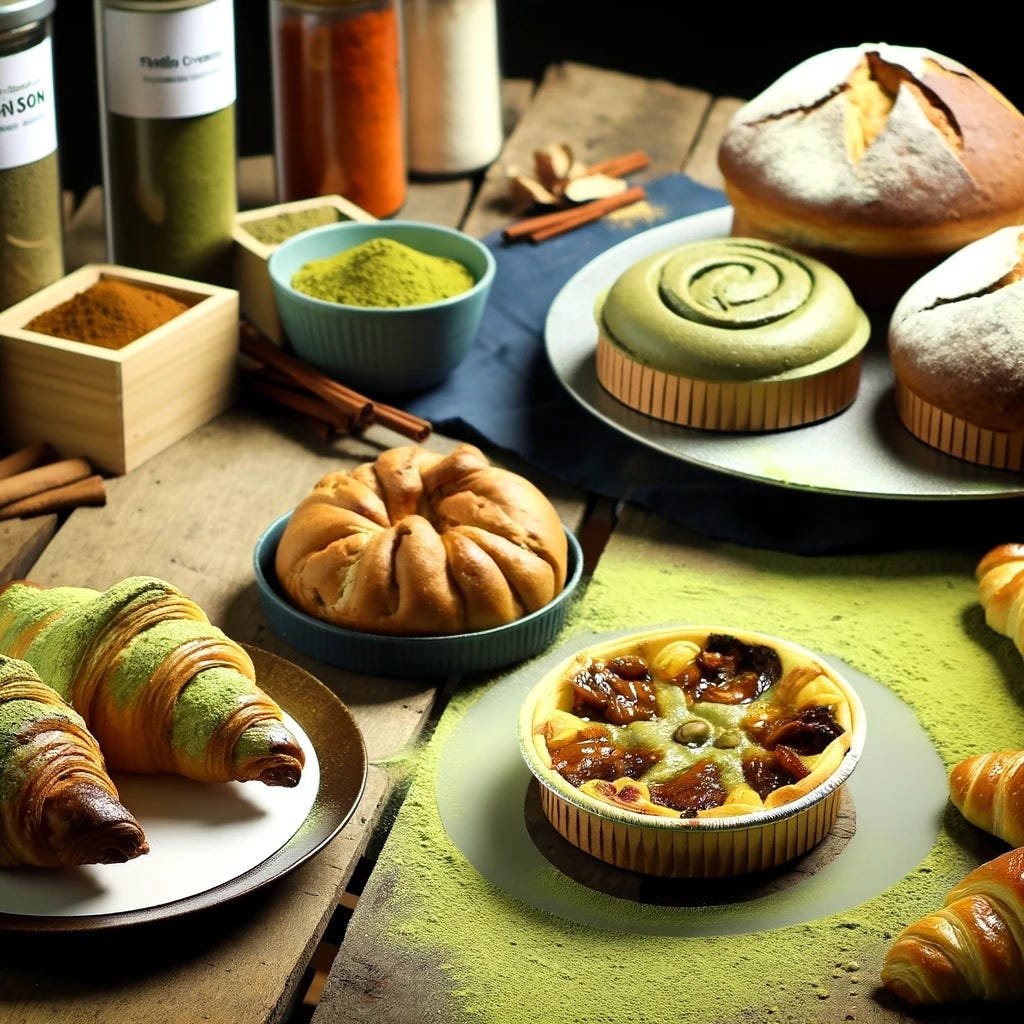
The Origins of Fusion Cuisine
For many years, fusion cuisine has combined culinary customs from several countries to produce intriguing and unique dishes. This culinary movement emerged as chefs sought to innovate by combining the best elements of diverse food traditions. One of the most fascinating expressions of this trend is seen in pastries, where Asian and French flavors come together to create unique delicacies. From matcha and croissants to miso macarons, the fusion of these rich culinary traditions is a feast for the senses.
If you’re searching for innovative pastries, consider visiting a French bakery in NYC that specializes in such unique combinations. These bakeries are displays of culinary artistry where classic methods are combined with cutting-edge flavors, not merely locations to satisfy your sweet craving.
Critical Elements of Asian and French Pastries
- Asian Ingredients: Asian pastries often feature matcha (green tea powder), red bean paste, sesame, and yuzu (citrus). These ingredients bring unique flavors and textures that complement traditional French pastry techniques.
- French Techniques: French patisserie is based on time-honored techniques, such as croissant dough, pâte à choux for éclairs and profiteroles, and delicate glazes that add a finishing touch to desserts. These techniques provide the structural integrity and mouthfeel that make pastries so delightful.
By incorporating these traditional Asian ingredients into classic French pastry techniques, chefs create a new culinary landscape. This fusion is more than just a mix; it’s an intentional blend that respects and elevates both traditions.
Popular Fusion Pastries
Many famous pastries are now evolving to include this exciting fusion. Take, for example, the matcha croissant. It combines a traditional French croissant’s buttery, flaky texture with matcha powder’s unique, earthy flavor. This adds a vibrant green color and imparts a subtle bitterness that balances the croissant’s sweetness. Another beloved pastry is the black sesame éclair, which pairs the nutty, slightly bitter taste of black sesame with the sophisticated structure of an éclair. The result is a decadent, satisfying dessert that offers a taste experience different from traditional pastries.
The Science Behind the Flavors
Combining these flavors isn’t just about mixing ingredients; it’s about understanding the science of taste. Each ingredient affects the overall balance of the pastry. The complexity of flavors in Asian and French cuisines allows chefs to create dimensional and balanced pastries that delight the palate. For instance, the umami richness of miso can enhance the sweetness of chocolate, creating a rounded and complete flavor profile.
Real-Life Examples of Fusion Pastries
Some of the top pastry chefs worldwide have already gained recognition for creating fusion pastries. Chef Dominique Ansel, famed for the Cronut, has experimented with yuzu and white chocolate to create pastries that are as beautiful as they are flavorful. Similarly, Chef Sadaharu Aoki has made a name for himself by combining Japanese ingredients with French patisserie techniques to create stunning desserts. Chef Aoki’s creations often feature traditional Japanese ingredients like matcha, azuki beans, and black sesame, integrated into classic French forms such as macarons and tartlets. These chefs are not just blending ingredients; they are blending cultures and culinary traditions in their masterpieces.
The Trend in Modern Bakeries
Influential bakeries worldwide are now offering their spins on these fusion pastries. In critical culinary hotspots like New York, Los Angeles, and Paris, bakeries create versions of Japanese-French pastries that attract locals and tourists alike. These bakeries serve as incubators for innovation where chefs constantly experiment with new combinations. They have become destinations for food enthusiasts looking to try something new and exciting, and their success stories often inspire other bakers to explore the world of fusion pastries.
How to Make Your Fusion Pastries
- Choose key Asian ingredients, such as matcha, yuzu, or red bean paste. Home bakers can quickly obtain these components because they can be found online or in most Asian grocery stores.
- Select a classic French pastry base, like choux pastry or croissant dough. If you’re new to French baking, start with more straightforward recipes before attempting complex pastries like croissants.
- Experiment with flavor combinations and ratios, ensuring a balance of sweetness and umami. Keep a food diary to note your experiments’ outcomes, making replicating successful recipes easier.
- Feel free to get creative with the presentation and garnishes.
Following these instructions, you can begin making your take on fusion pastries at home. This is to achieve a harmony of flavors where the French and Asian influences are balanced and do not dominate each other.
The Future of Fusion Pastries
As the popularity of fusion pastries continues to grow, so does innovation in the field. Chefs constantly seek new and exciting ways to merge these flavors, pushing the boundaries of what is possible in the pastry world. The future appears bright with countless options for inventive displays and taste combinations. For more inspiration, consider exploring the history of fusion cuisine and its global impact. With this understanding, you can enjoy the diverse culinary customs that fusion pastries symbolize and find inspiration to make your own.


